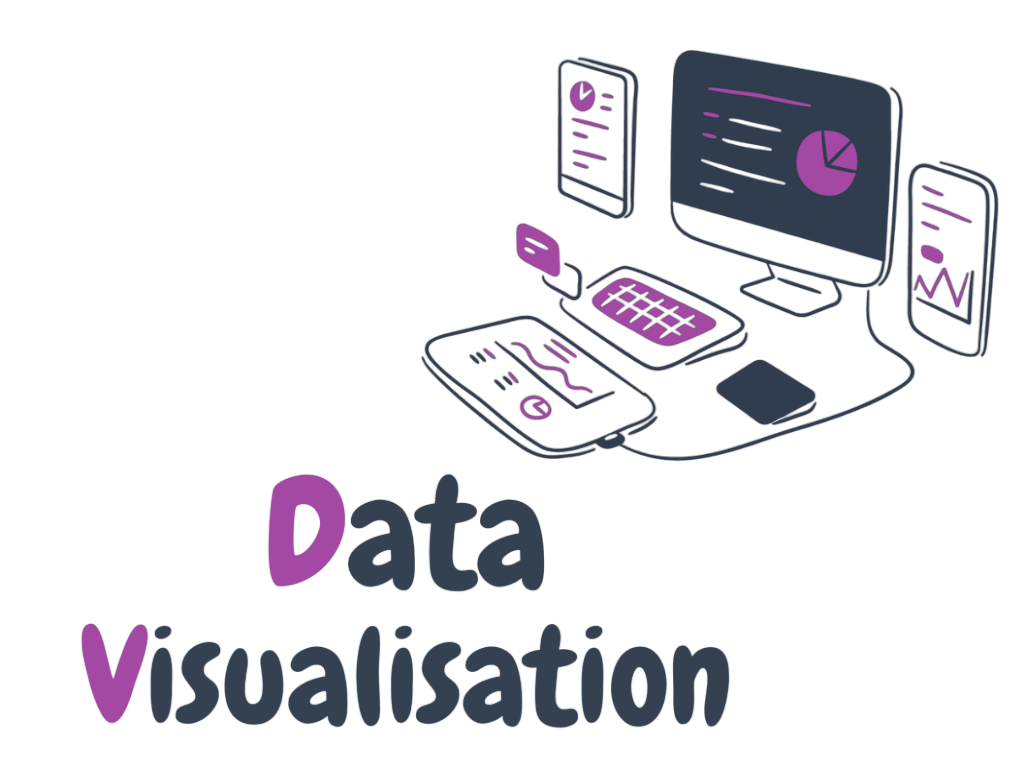-
Communicates Insights Effectively: Data visualisation
also helps to communicate insights effectively. It is
often said that a picture is worth a thousand words, and
this is certainly true when it comes to data.
Visualizations can help to convey complex information
and data-driven insights in a clear and concise way.
This is particularly important when presenting data to
stakeholders who may not have a background in analytics
or data science.
-
Enables Better Decision Making: Data visualisation can
also enable better decision making. By presenting data
in a visual format, decision-makers can quickly identify
patterns, trends, and outliers, and make more informed
decisions. This is particularly important in industries
such as finance and healthcare, where data can be
complex and difficult to interpret. By using data
visualisation, decision-makers can gain a deeper
understanding of their data and make more effective
decisions.
-
Provides Real-Time Insights: Data visualisation also
provides real-time insights. Many data visualisation
tools and platforms offer real-time data visualisation,
allowing users to monitor data in real-time and make
decisions based on up-to-date information. This is
particularly important in industries such as marketing
and e-commerce, where data changes rapidly and decisions
need to be made quickly.
-
Facilitates Collaboration: Finally, data visualisation
facilitates collaboration. By presenting data in a
visual format, teams can collaborate more effectively
and make data-driven decisions together. Data
visualisation tools often allow users to share
visualizations and collaborate in real-time, which can
help to improve communication and streamline
decision-making processes.
Types of Data Visualisation Techniques
There are several different types of data visualisation
techniques that businesses and organizations can use,
depending on their specific needs. Some of the most common
techniques include:
-
Charts and Graphs: Charts and graphs are a common type
of data visualisation technique used to represent
numerical data. Examples include bar charts, line
charts, and scatter plots.
-
Maps: Maps are used to visualize data geographically.
This can be particularly useful for businesses and
organizations that operate in multiple locations.
-
Infographics: Infographics are visual representations of
data that are designed to be easily understood. They can
include charts, graphs, images, and text.
-
Dashboards: Dashboards are a visual representation of
key performance indicators (KPIs) that are important to
a business or organisation. They can be used to monitor
progress towards goals and identify areas that need
improvement.
Best Practices for Data Visualisation
To create effective data visualizations, it is important to
follow some best practices. Firstly, it is important to
choose the appropriate type of visualisation for the data
being presented. Secondly, it is important to ensure that
the data is accurately represented in the visualisation.
This means checking that the scales are accurate and that
any calculations have been correctly applied. Thirdly, it is
important to keep the visualisation simple and
easy-to-understand. This means avoiding cluttered or overly
complicated visualizations that can be difficult to
interpret. Lastly, it is important to use color effectively
to highlight important data points and make the
visualisation visually appealing.
In conclusion, data visualisation is an essential tool for
businesses and organizations to make better decisions. By
using data visualisation techniques such as charts, graphs,
and maps, businesses can quickly identify patterns and
trends in their data, communicate complex data in a simple
format, and uncover new insights that may have been missed
through traditional data analysis techniques. By following
best practices for data visualisation, businesses can create
effective visualizations that communicate insights to
stakeholders and drive better decision-making.

